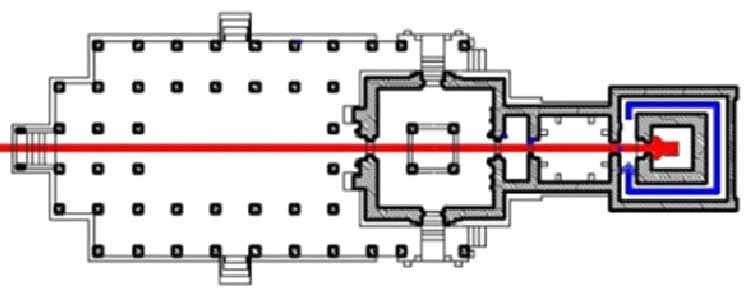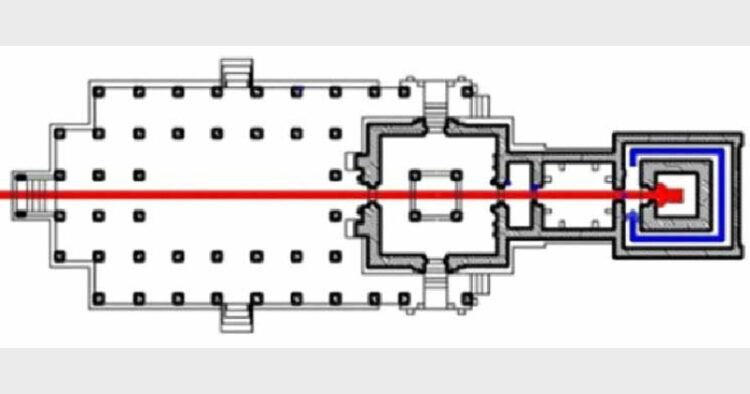The dance and its immediate architectural setting of Rang Mandapa is indeed very special. It not only facilitates the movement of the footsteps of the dances in a particular rhythm but also eases the direct connect of the dancer-devadasi- devotee with the God
-Dr Ujwala Chakradeo
 Rang Mandapa
Rang Mandapa The role of the devadasi dance as a ritual offering has been specified as the 15th of the 16 upacharas (sola-sopaschar) prescribed by the Agamas. The dance that has been named as a part of South Indian culture in Bharath’s Natya Shastra (2 BCE- 2 CE) is Dakshi Natya (ie., Bharat Natyam). It was renamed Dasi Attam during the 6th – 10th c. CE, when it became part of the temple repertoire.
History of sacred dance and music are extensively recorded for Tamil Nadu and Odisha, Maharashtra, established as Agamic temple rituals. The importance of the sacred dance of Dasi Attam in Karnataka is accentuated by the existence of a designated space, i.e. the rang mandap.
In the medieval period, Hindu rituals were mostly as specified in ‘agamas’. God was given the status of king at that time. It is during this period that we see the expansion of the temple from a simple shrine to vast temple towns. As practices became more elaborate, mandaps were added onto the garbhagriha to provide space for service to god, as it was to kings. One of these was the rang-mandap (in Karnataka), which was specifically used for the ritual dance offering. Both architecture and dance are disciplines which deal with common vocabulary of space and movement. Visual and spatial relationships are seen to form between the dance and the space of its performance, which are essential to the evocation of emotion within the observer. In addition to being an offering to the Divine, the “gestures, postures, dances, patterns of movement” that make up a ritual are the tangible act that is required to connect with the intangible Reality (Crossley, 2004). The rituals are “enacted” in the architectural space which becomes the “stage” for it. The dance and its immediate architectural setting of Rang Mandapa is very special, it not only facilitates the movement of the footsteps of the dances in a particular rhythm but also eases the direct connect of the dancer-devadasi- devotee with the lord, the God.
(The columnist is Principal of SMM College of Architecture, Nagpur and specialises in Bharatiya Architectural Heritage)














Comments